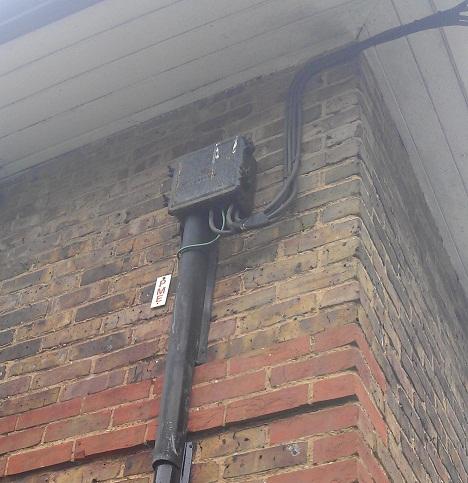Currently getting quotes to upgrade our old fusebox to a 10/12 way RCBO consumer unit.
Getting different advice regarding some earth issues, and wanted to check.
With the earth bonding inside our house we have three earth wires from the bathroom, that go into a earth connector block, one cable then goes into another earth connector block where it joins the gas main earth, and goes back to the CU. One electrician said using exposed earth connector blocks is a big no no, and is looking at re pulling cables for continuous runs, the other saw no problem.
Currently we are supplied with overhead cables, we have a earth spike so assume using TT - the earth spike is uncovered and is slightly corroded. One electrician said he would replace & cover. The other didn't seem concerned (no requirement for it to be covered) and said it would be much better to get PME from the DNO anyway.
Incidentally the DNO has a PME earthing box on our house.
Does either option TT/PME make more sense?
Getting different advice regarding some earth issues, and wanted to check.
With the earth bonding inside our house we have three earth wires from the bathroom, that go into a earth connector block, one cable then goes into another earth connector block where it joins the gas main earth, and goes back to the CU. One electrician said using exposed earth connector blocks is a big no no, and is looking at re pulling cables for continuous runs, the other saw no problem.
Currently we are supplied with overhead cables, we have a earth spike so assume using TT - the earth spike is uncovered and is slightly corroded. One electrician said he would replace & cover. The other didn't seem concerned (no requirement for it to be covered) and said it would be much better to get PME from the DNO anyway.
Incidentally the DNO has a PME earthing box on our house.
Does either option TT/PME make more sense?




